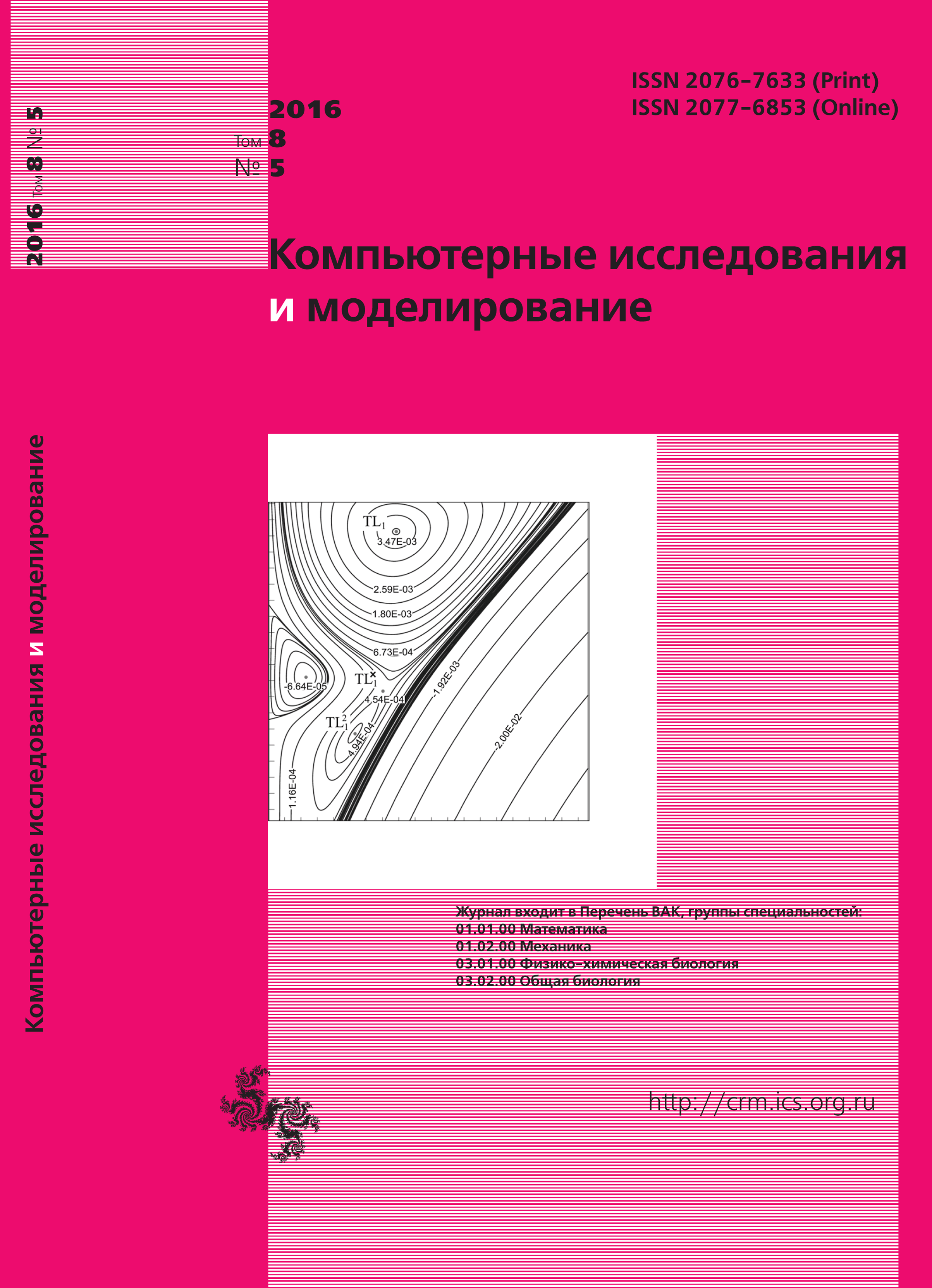All issues
- 2025 Vol. 17
- 2024 Vol. 16
- 2023 Vol. 15
- 2022 Vol. 14
- 2021 Vol. 13
- 2020 Vol. 12
- 2019 Vol. 11
- 2018 Vol. 10
- 2017 Vol. 9
- 2016 Vol. 8
- 2015 Vol. 7
- 2014 Vol. 6
- 2013 Vol. 5
- 2012 Vol. 4
- 2011 Vol. 3
- 2010 Vol. 2
- 2009 Vol. 1
Classification of dynamical switching regimes in a three-layered ferromagnetic nanopillar governed by spin-polarized injection current and external magnetic field. II. Perpendicular anisotropy
The mathematical model of a three-layered Co/Cu/Co nanopillar for MRAM cell with one fixed and one free layer was investigated in the approximation of uniformly distributed magnetization. The anisotropy axis is perpendicular to the layers (so-called perpendicular anisotropy). Initially the magnetization of the free layer is oriented along the anisotropy axis in the position accepted to be “zero”. Simultaneous magnetic field and spinpolarized current engaging can reorient the magnetization to another position which in this context can be accepted as “one”. The mathematical description of the effect is based on the classical vector Landau–Lifshits equation with the dissipative term in the Gilbert form. In our model we took into account the interactions of the magnetization with an external magnetic field and such effective magnetic fields as an anisotropy and demagnetization ones. The influence of the spin-polarized injection current is taken into account in the form of Sloczewski–Berger term. The model was reduced to the set of three ordinary differential equations with the first integral. It was shown that at any current and field the dynamical system has two main equilibrium states on the axis coincident with anisotropy axis. It was ascertained that in contrast with the longitudinal-anisotropy model, in the model with perpendicular anisotropy there are no other equilibrium states. The stability analysis of the main equilibrium states was performed. The bifurcation diagrams characterizing the magnetization dynamics at different values of the control parameters were built. The classification of the phase portraits on the unit sphere was performed. The features of the dynamics at different values of the parameters were studied and the conditions of the magnetization reorientation were determined. The trajectories of magnetization switching were calculated numerically using the Runge–Kutta method. The parameter values at which limit cycles exist were determined. The threshold values for the switching current were found analytically. The threshold values for the structures with longitudinal and perpendicular anisotropy were compared. It was established that in the structure with the perpendicular anisotropy at zero field the switching current is an order lower than in the structure with the longitudinal one.
Copyright © 2016 Ostrovskaya N.V., Skidanov V.A., Skvortsov M.S.
Views (last year): 4. Citations: 1 (RSCI).Indexed in Scopus
Full-text version of the journal is also available on the web site of the scientific electronic library eLIBRARY.RU
The journal is included in the Russian Science Citation Index
The journal is included in the RSCI
International Interdisciplinary Conference "Mathematics. Computing. Education"







